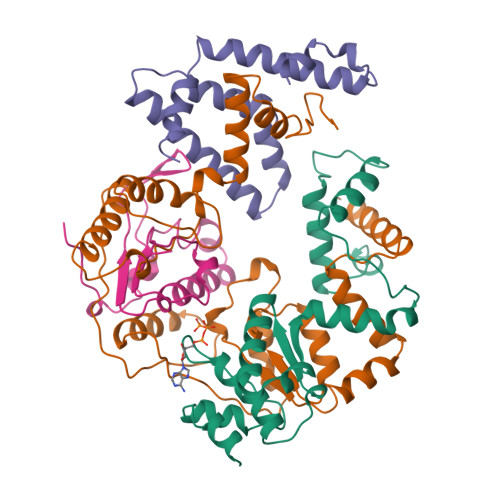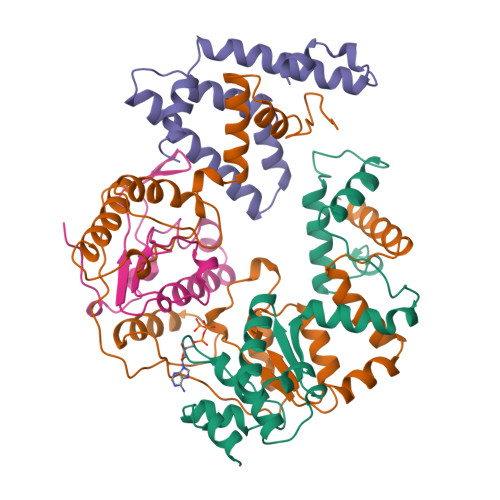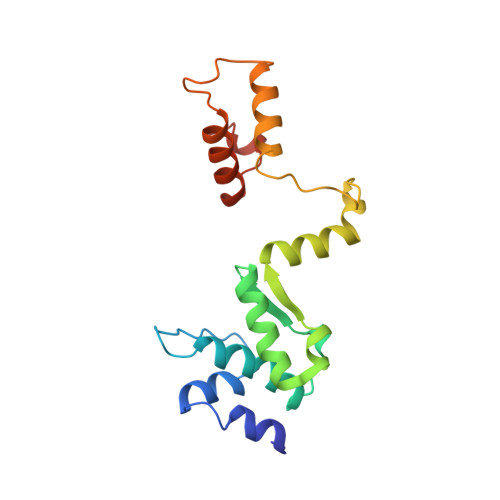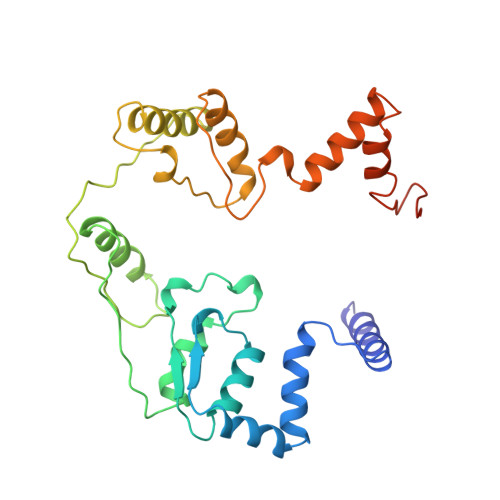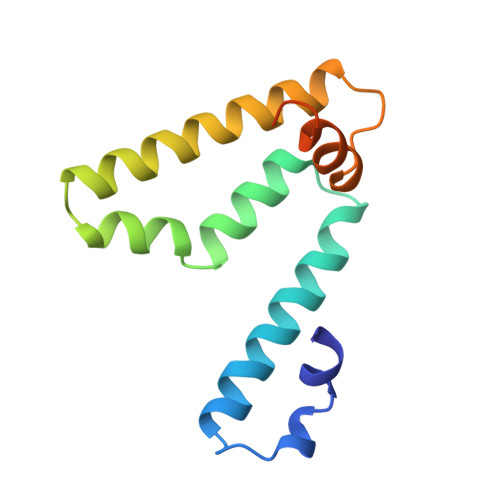DNA binding mediates conformational changes and metal ion coordination in the active site of PcrA helicase.
Soultanas, P., Dillingham, M.S., Velankar, S.S., Wigley, D.B.(1999) J Mol Biology 290: 137-148
- PubMed: 10388562
- DOI: https://doi.org/10.1006/jmbi.1999.2873
- Primary Citation of Related Structures:
1QHG, 1QHH - PubMed Abstract:
Based upon the crystal structures of PcrA helicase, we have made and characterised mutations in a number of conserved helicase signature motifs around the ATPase active site. We have also determined structures of complexes of wild-type PcrA with ADPNP and of a mutant PcrA complexed with ADPNP and Mn2+. The kinetic and structural data define roles for a number of different residues in and around the ATP binding site. More importantly, our results also show that there are two functionally distinct conformations of ATP in the active site. In one conformation, ATP is hydrolysed poorly whereas in the other (activated) conformation, ATP is hydrolysed much more rapidly. We propose a mechanism to explain how the stimulation of ATPase activity afforded by binding of single-stranded DNA stabilises the activated conformation favouring Mg2+binding and a consequent repositioning of the gamma-phosphate group which promotes ATP hydrolysis. A part of the associated conformational change in the protein forces the side-chain of K37 to vacate the Mg2+binding site, allowing the cation to bind and interact with ATP.
Organizational Affiliation:
Sir William Dunn School of Pathology, University of Oxford, South Parks Road, Oxford, OX1 3RE, UK.








